Towards the end of December 2019 news began to emerge from China of a previously-unknown virus which had to potential to cause severe respiratory failure. Numbers were threatening to overwhelm their healthcare system and there was no cure and no vaccination. The virus is said to have reached Italy by Feb 2020 and the UK by late Feb. Experience in Italy mirrored that in China. The virus, a coronavirus, became known as SARS-cov-2 and the disease it caused as covid-19.
When it became evident that there were going to be significant numbers of people catching covid-19 in the UK the government acted on 23 March to impose a lockdown. The key message was 'stay at home - protect the NHS - save lives'.
Of course these were subject to interpretation and were variously interpreted but by and large well respected. The fear of covid triggered a spate of panic buying with supermarkets being mobbed and toilet rolls, hand sanitiser, dried pasta, tinned beans and flour being particularly sought (and in some cases fought over). Gradually shops began to adapt with tape on the pavement marking out 2-metre spaces and signs limiting the numbers in the shop at any one time. Thankfully the weather was good, so people didn't mind queuing outside. These measures put a strain on many businesses and the government announced a furlough scheme whereby they would support 80% of the wages of staff who would otherwise be laid off. Meantime parents suddenly had to learn the principles of home schooling and teachers those of distance learning as schools were closed to all except the children of key workers. The rest of us rapidly adjusted to meetings via a variety of online platforms.
When it became evident that there were going to be significant numbers of people catching covid-19 in the UK the government acted on 23 March to impose a lockdown. The key message was 'stay at home - protect the NHS - save lives'.
- Work outside the home was prohibited except for 'essential key workers'
- It was forbidden for shops to open unless they sold essential supplies. Cafes, pubs, social events, festivals, sport and places of worship were banned.
- It was permitted to take one piece of exercise per day from the house. An unofficial guideline that this should be of 1 hour's duration grew up but this was never mandated. People could not travel by car to take exercise.
- Exercise should be alone or with a member of your own household.
- It was forbidden to meet someone who was not a member of your household unless it was necessary to support a vulnerable person.
- People were told to exercise 'social distancing', defined as being closer than 2 metres to another person for 15 minutes or more.
- People at risk of severe complications of covid were told to 'shield', or not leave the house for any reason for 12 weeks. This was roughly defined as people eligible for the free 'flu jab.
Of course these were subject to interpretation and were variously interpreted but by and large well respected. The fear of covid triggered a spate of panic buying with supermarkets being mobbed and toilet rolls, hand sanitiser, dried pasta, tinned beans and flour being particularly sought (and in some cases fought over). Gradually shops began to adapt with tape on the pavement marking out 2-metre spaces and signs limiting the numbers in the shop at any one time. Thankfully the weather was good, so people didn't mind queuing outside. These measures put a strain on many businesses and the government announced a furlough scheme whereby they would support 80% of the wages of staff who would otherwise be laid off. Meantime parents suddenly had to learn the principles of home schooling and teachers those of distance learning as schools were closed to all except the children of key workers. The rest of us rapidly adjusted to meetings via a variety of online platforms.
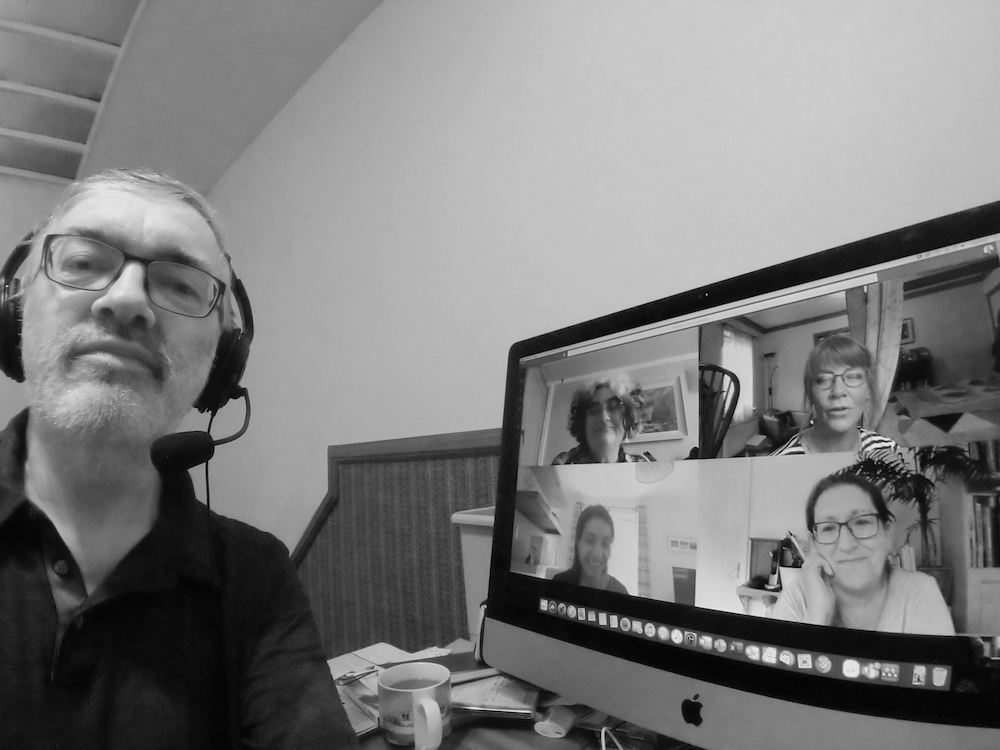
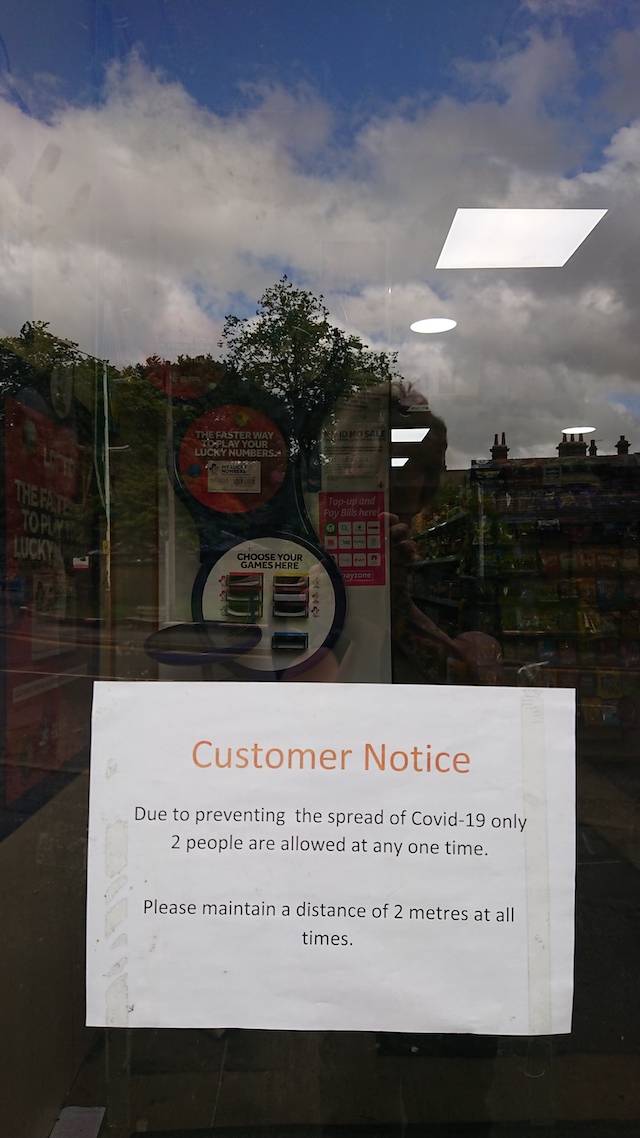
Cloughfold Store 22 May 2020
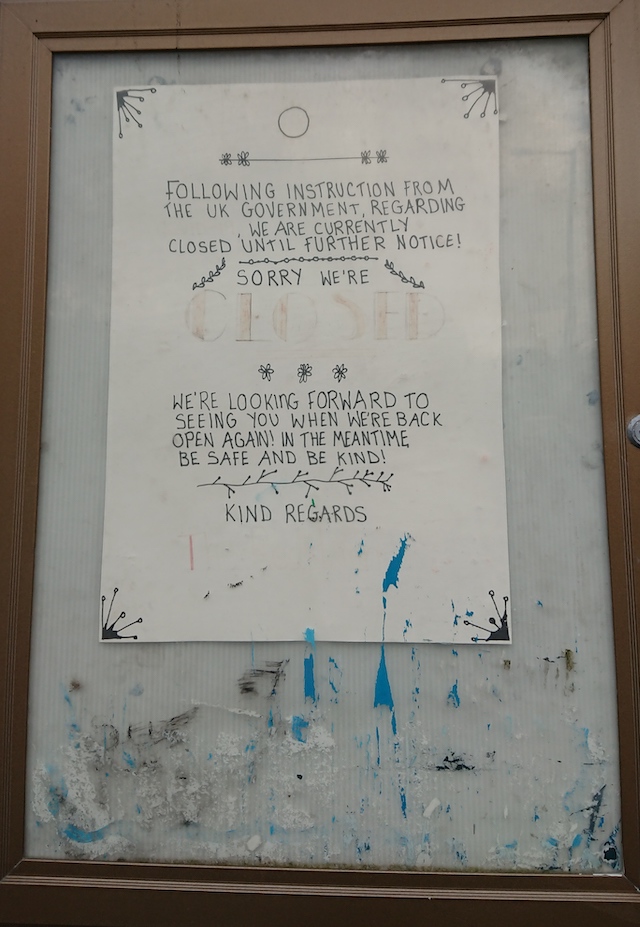
Red Lion 22 May 2020
Expressions of support, particularly for the NHS, began to emerge. The rainbow became a symbol of hope and images of rainbows began to appear in house windows. Some were sent to hospitals where they were laminated and displayed on walls. In Cloughfold, small bags containing 'guardian angels' were hung from trees, to be taken by anyone who felt in need.
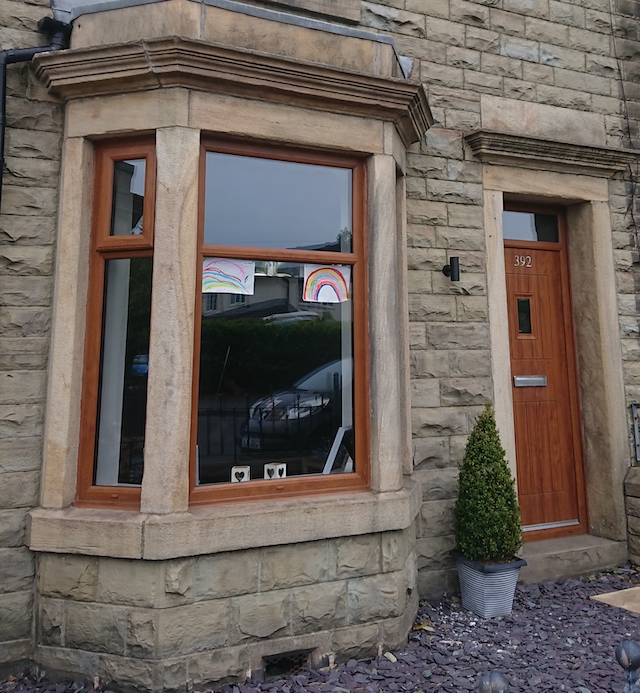
Newchurch Road 21 May 2020
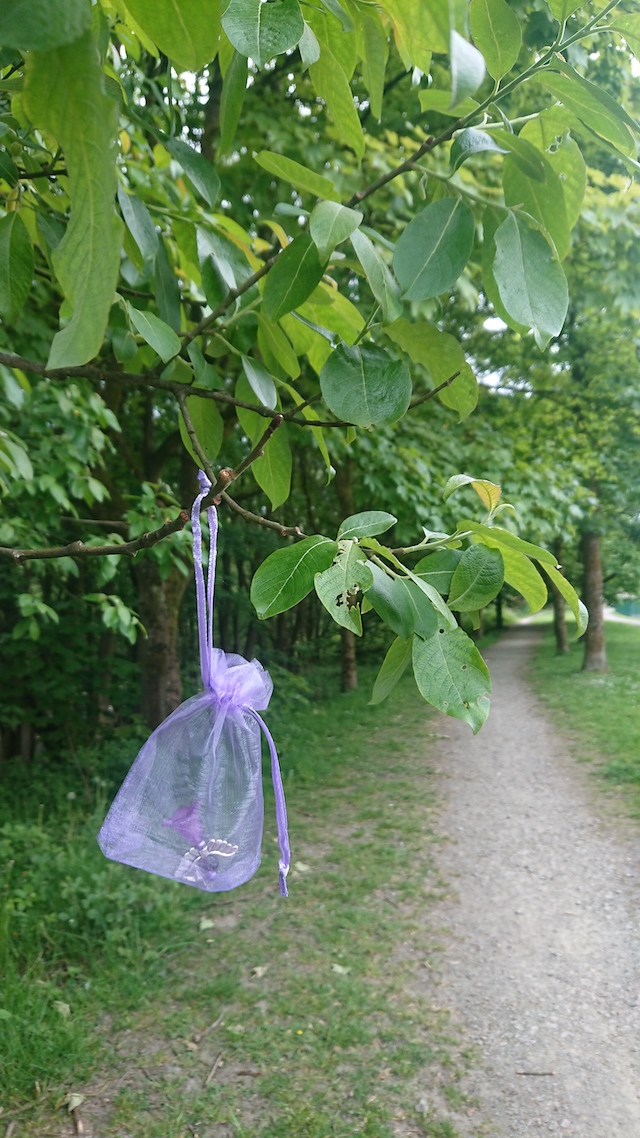
Bacup Road 21 May 2020
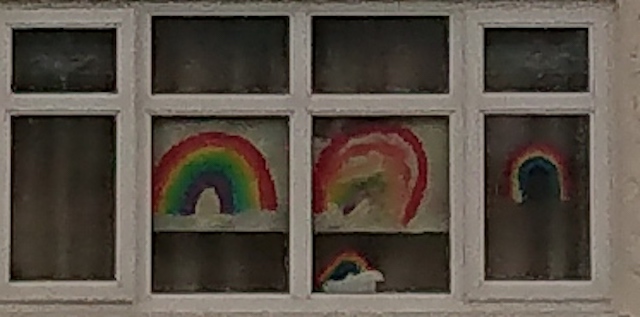
Newchurch Road 21 May 2020
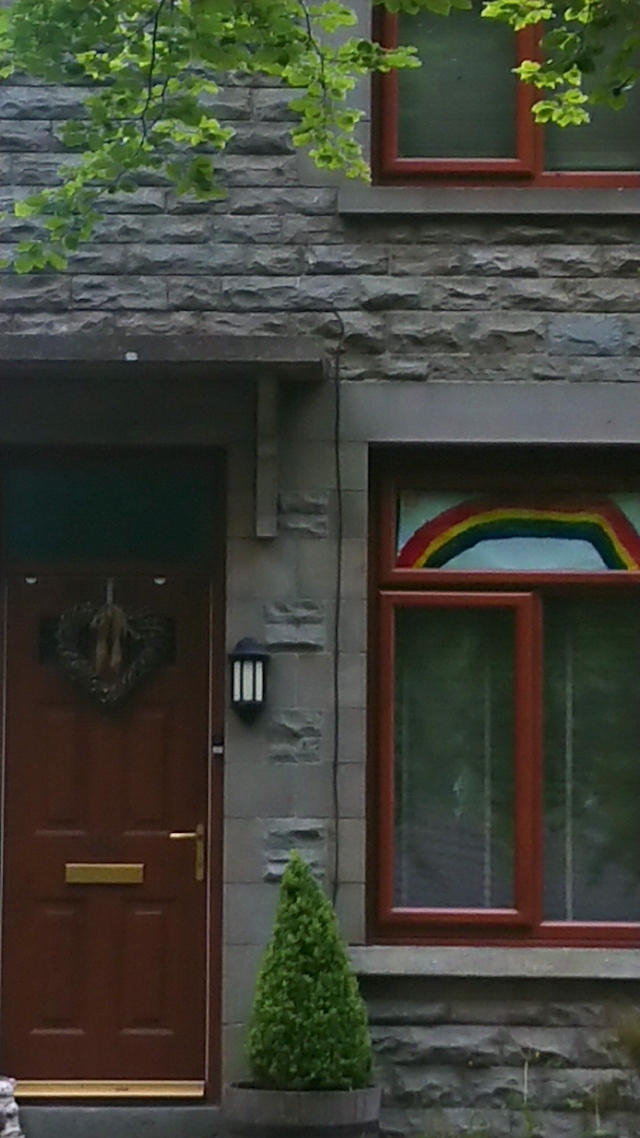
Newchurch Road 21 May 2020
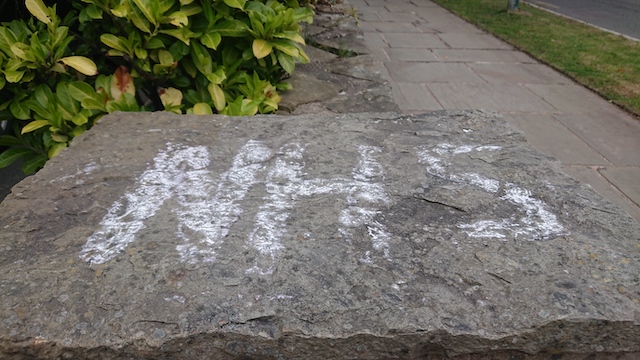
Newchurch Road 21 May 2020
This was closely followed by the 'clap for carers', when people were encouraged to show their support for the NHS by standing at the end of their drive and clapping (or banging pans with spoons) for two minutes at 8pm every Thursday. This was generally observed in the area, although it is said that in some other places over-zealous residents were taking a register of who clapped and who didn't.
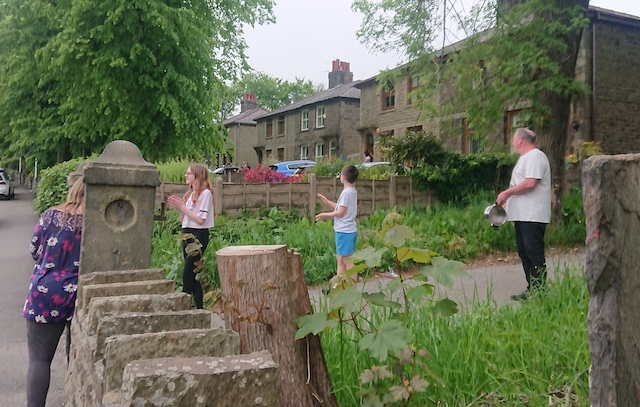
21 May 2020
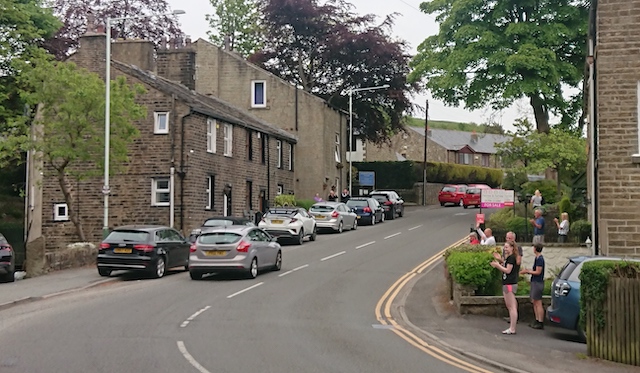
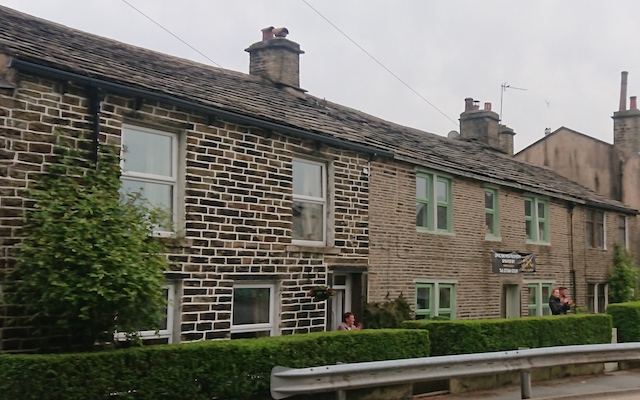
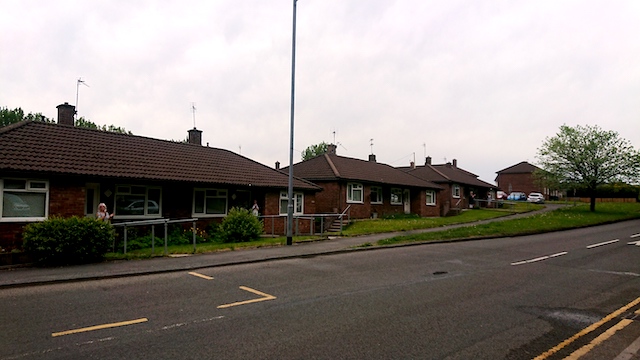
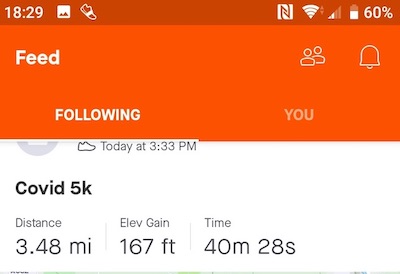
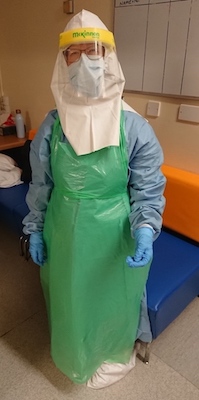
Supplies of PPE were pretty reliable, thanks in part to a series of cottage industries. Schools made visors with their 3D printers and an army of needlewomen sewed scrubs (now available in a variety of colours…) and ear protectors to stop the elastic from facemasks rubbing in behind the ears.
Various charities, together with the council, initiated a number of schemes to support vulnerable people with food supplies, shopping, collecting prescriptions etc and I'm aware of Springhill residents involved in these schemes.
Testing for the virus was gradually rolled out, initially to those having symptoms or to their family members who were also deemed to be 'key workers'. A series of pop-up drive through testing centres were set up by the army. This one ran at Marl Pits between May 15-17, further pop-up sessions were held throughout the pandemic.
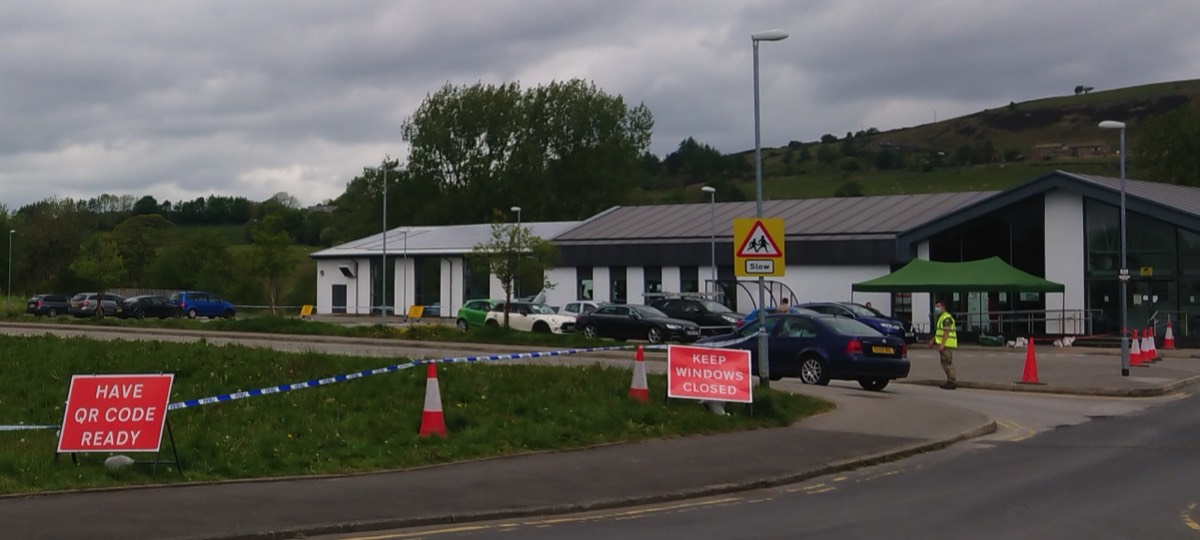
To the best of my knowledge no Springhill resident suffered from covid-19 in the first wave. Rossendale was relatively spared, with, as of 20 May, 169 confirmed cases or 238 per 100,000 residents. There were said to be 18 deaths, this is almost certainly an under-estimate as 17 of these were reported to have occurred in two care homes. It may be that Rossendale residents who died in hospital were counted at their place of death.
On 17 May the Prime Minister, Boris Johnson, announced an easing of the lockdown with driving to exercise being permitted, as was meeting one other adult in an outdoor space (but not a private garden at that time). Schools were due to reopen on 1 June for selected year groups, which challenged head teachers on how to socially distance 5 and 6 yr olds. Also on 1 June it was permitted to meet in gardens and in groups of up to six outside. Elite sport could also begin again, starting with horse racing.
By 9 June the number of confirmed cases in Rossendale was 177.
There continued to be much discussion regarding what were and were not sensible steps to take to emerge from lockdown. From 15 June anybody arriving in the UK had to quarantine for 14 days, 'non-essential' shops were allowed to reopen and facemarks were to be worn on public transport. In addition 'social bubbles' were created where a single person could stay overnight with another adult/family - but only one, and only one per family. I'm not sure whether Springhill residents took this offer up or not.
By 27 June the number of confirmed cases in Rossendale was 178.
Cafes, restaurants and pubs were allowed to open with indoor seating from 4 July and holiday travel in the UK was permitted. Facemarks were compulsory on public transport from 4 July and in shops from 24 July. 'Social distancing' was defined as 2m, or 1m with adds precautions such as mask wearing or not sitting/standing face to face.
Although numbers in Rossendale remained relatively low, they increased in the surrounding boroughs and the government increased the restrictions again on 31 July. People were not permitted to meet others who were not from the same household or in the same 'bubble' in private houses or gardens or inside in cafes, but could continue to do so in parks and outdoor places. Places of worship were allowed to reopen.
As of 9 August there were 304 confirmed cases in Rossendale, the second lowest in Lancashire.
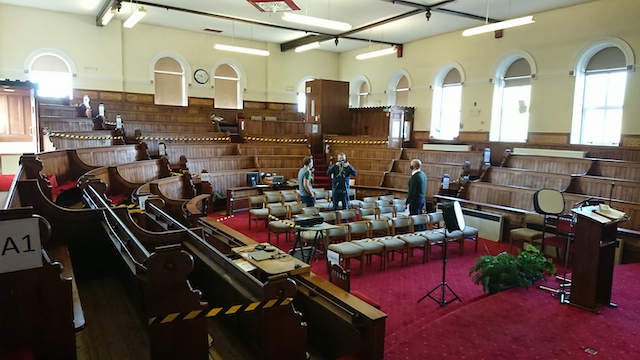
Kay St Baptist Church, Rawtenstall, adapted for covid-safe and online worship.
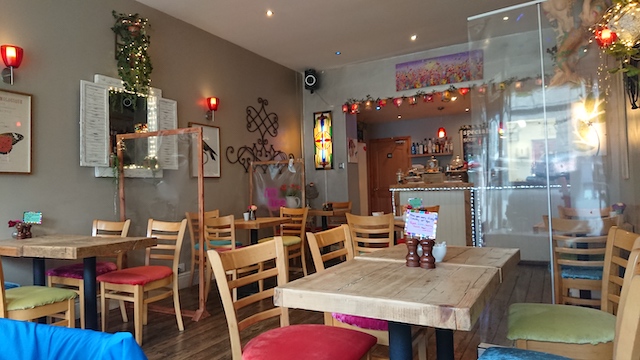
Fig Tree cafe, Rawtenstall, adapted for covid-safe lunches.
The increased restrictions were lifted on 26 August, just in time for the Bank Holiday weekend. Sadly no sooner were they lifted than the virus numbers started to rise rapidly, with 395 confirmed cases as of 7 September and Rossendale became an area of 'enhanced support'. These cases were traced to an out-of-school facility in Whitworth and a handful of pubs/cafes in Rawtenstall and Bacup. Interestingly the absolute number of infections was still the second lowest in Lancashire, the concern being raised by the increasing infection rate per 100,000 population and rate of increase.
Unfortunately numbers in Rossendale continued to rise and Rossendale, together with most of the rest of Lancashire, was put under greater restrictions as from September 22nd, with two households being forbidden to meet indoors or in private gardens but could do so in public places or cafes etc. However these were superseded pretty much immediately as these restrictions were made nationwide on the same day. By this time three classes or year groups in a single secondary school locally had been sent home to self-isolated due to positive cases within the bubbles.
In the week to 19 Sept there had been 114 new cases in Rossendale, giving an infection rate of 159.5/100,000. This was an increase of 47 cases on the previous week.
On 12 October the country was divided into three tiers of risk, with Rossendale being in tier 2 or 'high' risk. By then there had been 1106 cases in Rossendale and there were 30 new cases a day, give or take. Tier 2 restrictions were largely unchanged from those in force before this system was introduced. This lasted 3 days before Rossendale was moved into tier 3 with individuals encouraged not to travel beyond the tier 3 region and people only allowed to meet those outside their household/bubble in outdoor public places. Two weeks later Boris reintroduced a 4 week national lockdown: non-essential shops to close together with sports facilities and places of worship, stay at home except for exercise but schools and universities remained open. Cafes could serve takeaway only.
On 2 December we emerged from the national 'lockdown' to tier three which was in effect lockdown by any other name, except that non-essential shops and places of worship could remain open. Rossendale by this time had a total of 3308 cases and was increasing at 35-40 per day. The total number of deaths was unknown. On the same day the licensing of the first vaccine was announced but with only enough for 400,000 people in the first wave and its having to be stored at -70 degrees it is uncertain how many Rossendale people will receive it. Meanwhile mass testing was promised, but had yet to be rolled out.
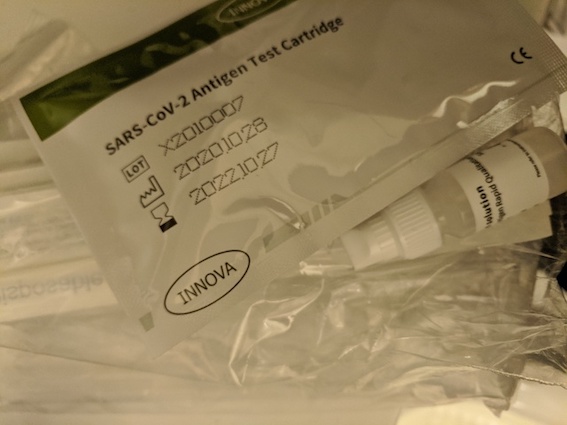
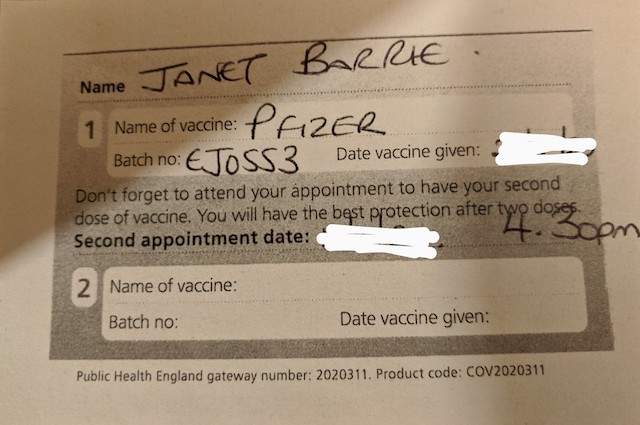
A moratorium was declared for Christmas Day with up to three households meeting inside on that day only. Initially this was to be permitted for a five day period but rising case numbers, mainly in the south east of England, led to this being reduced and a new tier four was introduced which is lockdown by any other name in effect. At the same time a new variant of the virus was announced; probably no more severe in terms of disease outcome but probably more infectious. This spread rapidly and tier four was extended to cover Rossendale (together with much of the country) on 31 December - Happy New Year.
As of 31 December the infection rate in Rossendale was 241 per 100,000. The weekly count in December was roughly equal to the total to the end of June. There had been a total 4009 cases in Rossendale and 95 deaths. Rest in peace.
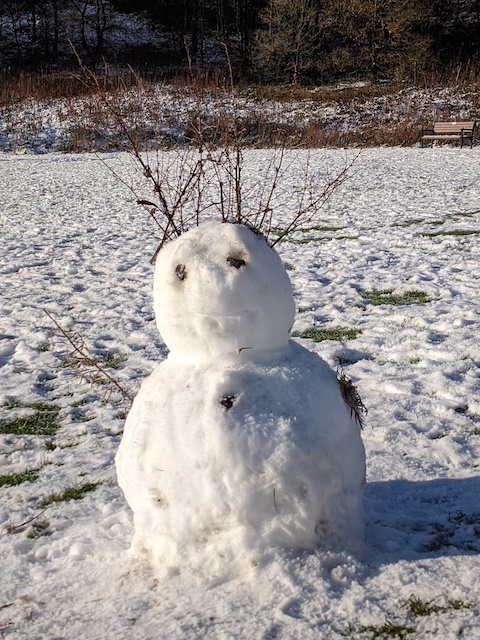
Lockdown hair
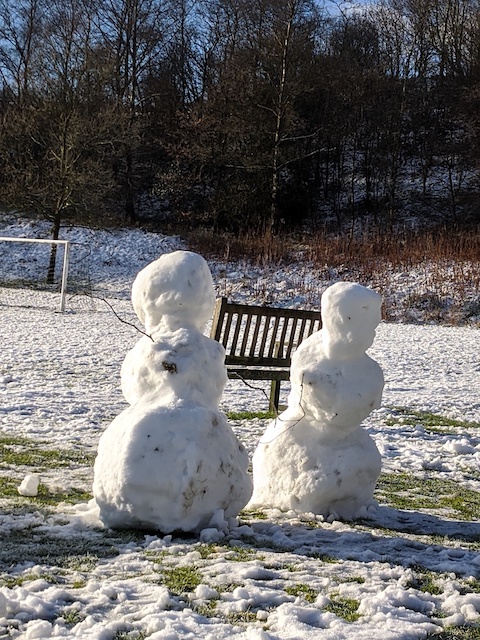
Social distancing
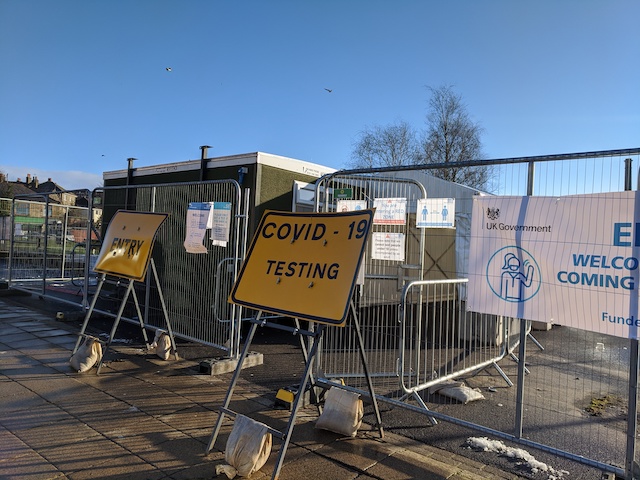
Testing centre, Rawtenstall, Jan 2021
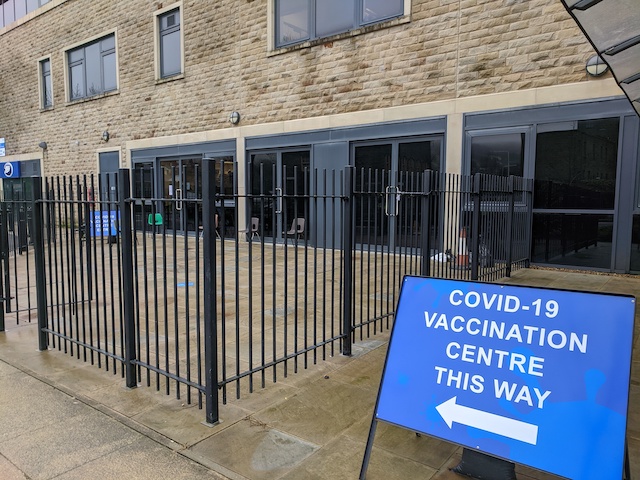
Vaccination centre, Rawtenstall, Jan 2021
The increasing infection rates led to an increasing demand on intensive care (which, together with acute medicine, is the 'pinch point' regarding covid treatment in the NHS). In turn this led to the reintroduction of lockdown on January 5th, just one day after the children returned to school. As lockdown continued, the vaccination programme continued apace and hospitalisation and death numbers began to fall Boris outlined a putative 'road map' out of lockdown:
8 March: children began to return to school (with a programme of self-testing), care home residents could meet and hold hands with one other relative (after a period of about a year) and two people were allowed to sit together outdoors
29 March: Six people or two households can meet outdoors, outdoor sports facilities can open and travel outside the local area is permitted.
12 April: Non-essential retail and personal care can reopen, as can outdoor hospitality and self-contained holiday accommodation. Indoor gyms and swimming pools can also reopen.
17 May: Most outdoor social contacts to be lifted, six people or two households can meet indoors and indoor hospitality and hotels can open.
21 June: All legal limits on social contact to be removed and the remaining closed sectors of the economy to reopen. Hopefully.
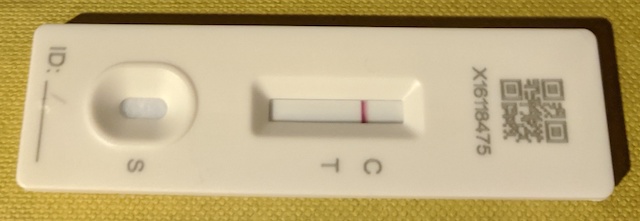
As the possibility of hospitality returning to serving people outdoors drew closer, traders worked hard to make their premises as compliant as possible with the landlord of the Red Lion extending his beer garden over the car park. Rossendale at this stage reported 6059 cases, or 847.3 per 100,000 population. The '0.3' of a case always amused me.
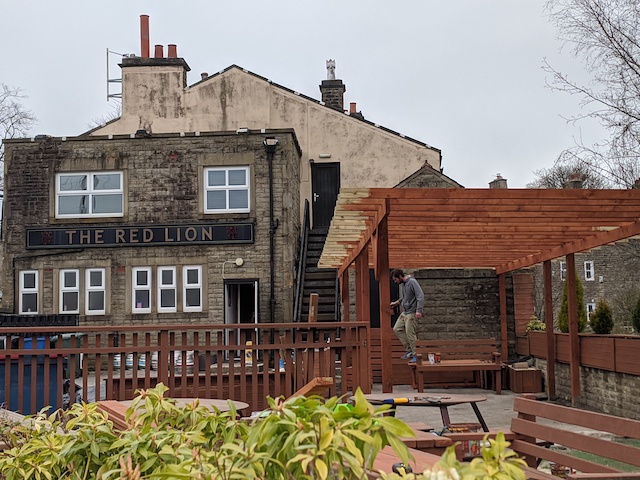
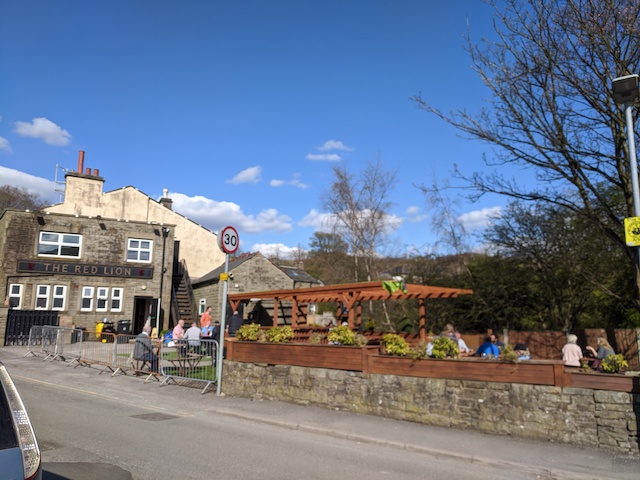
It was going well with deaths, inpatient numbers and positive tests reducing and the number of people vaccinated increasing when news came from India of large numbers of people suffering from a rapidly-transmissible variant of the virus. These overwhelmed the local health resources with distressing reports of hospitals running out of oxygen and cremation facilities being overwhelmed. Many NHS staff are of Indian origin and, already exhausted and overwhelmed by the impact of the pandemic in their NHS practice, were faced with the double stress of worry about family and friends and watching friends and university compatriots struggle with their workload. Many struggled with this, and set up a number of initiatives to send oxygen concentrators to their contacts there.
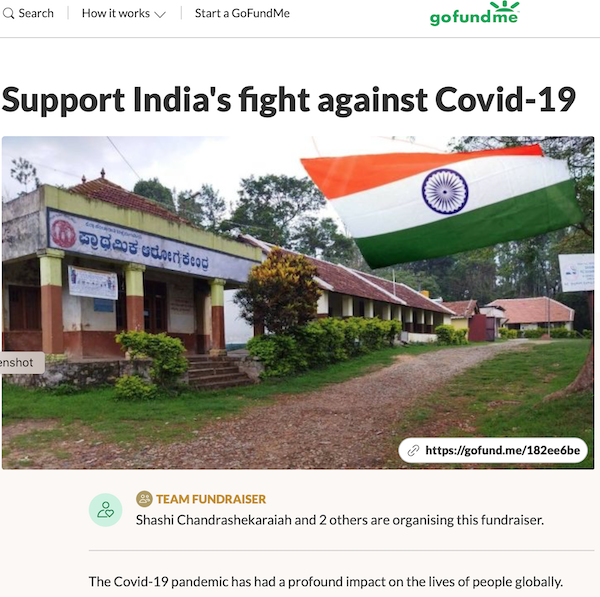
Nearer to home there were clusters of the 'Indian variant' in Lancashire and Greater Manchester but inpatient numbers remained manageable. The lifting of restrictions due on May 17th occurred as planned. Overseas holiday travel was permitted in a number of 'green zone' countries, however there were only 12 of these, including various remote islands in the South Atlantic - Falkland Islands anyone? - and Portugal. Most countries were in the 'amber zone', requiring 10 days' hotel quarantine and two negative tests on return with travel for essential reasons only and not holidays. A small number of countries remained on the 'red zone', from which all inward travel was banned. There was much debate around the delay between the increasing number of cases in India being recognised and India being added to the red zone.
The reopening of indoor seating in cafes was particularly welcomed, particularly as the weather remained, shall we say, inclement and not favourable to outside dining.
However the incidence of the 'Indian variant', now renamed the Delta variant, continued to rise nationally and the planned removal of all restrictions on meeting and distancing planned for June 21st was deferred for four weeks. In the meantime a major push was made to increase the number of people vaccinated, as it became apparent that serious infection was rare in people who had received two doses of vaccine. Simultaneously there was a shift in the political narrative with the emphasis shifting towards 'living with the virus' and increased discussion of reducing restrictions on 19 July despite numbers still increasing rapidly - in our hospital the number of patients in ITU with covid increased x5 in little over a fortnight.
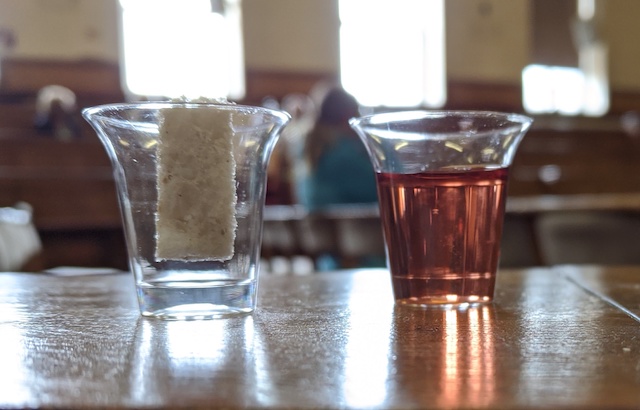
Despite increasing numbers, remaining restrictions were indeed lifted on July 19th with repeated exhortations from the Government to be 'sensible'. By 11 Aug the infection rate in Rossendale, with a population of around 70,000, had stabilised at about 25-30 per day. By and large local people were being 'sensible' with most of the cafes still having socially distanced tables and most people continuing mask wearing as before. Meanwhile people were still queuing for the vaccine.
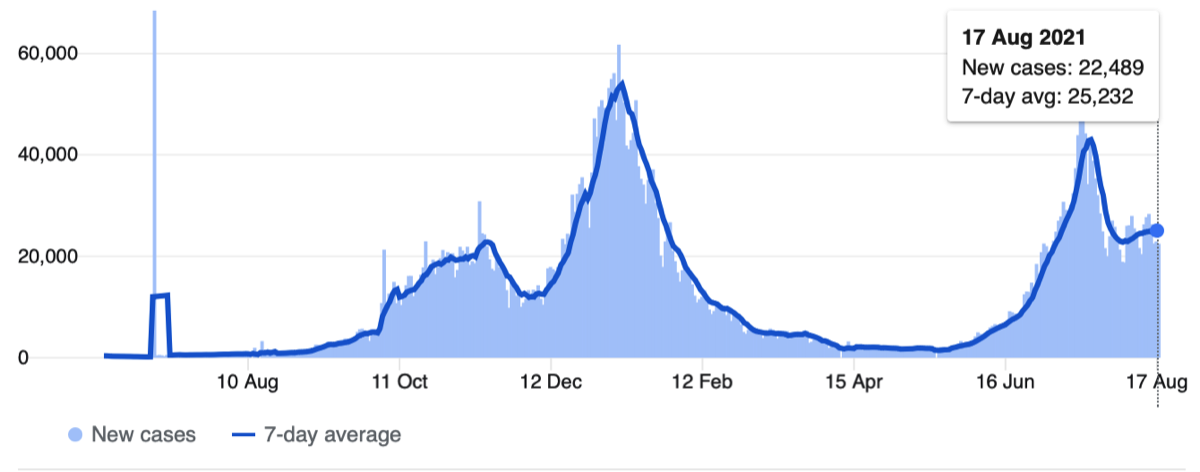
This graph shows the distribution of cases in Rossendale over time, taken from Government data. Cases continued around the 20-30/day level.
Towards the end of September the Government announced that people over 50 and NHS/care workers who had their second vaccine dose over 6 months ago were eligible for a booster dose of the vaccine, either Pfizer or Moderna, irrespective of the initial vaccine received. Colleagues formed an orderly queue.
Meanwhile, tidying prior to an office move found the original visor printed by a local school's DT department on their 3D printer and held together by micropore…
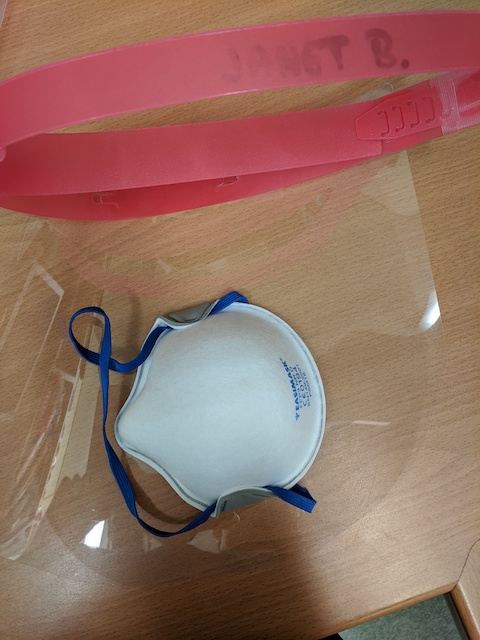
Late November saw the emergence of the Omicron variant originating in South Africa. The fear was that this variant was more transmissible than previous versions with changes in the spike protein offering the possibility of vaccine escape but its effects on disease severity being unknown. Whilst the government acted rapidly to stop travel from affected areas, Omicron had already entered the country. The booster programme was expanded, an interesting response to a variant potentially showing vaccine escape.
Meanwhile people tried to continue with normal activities as much as possible with due regard to safety. Care homes continued to be vulnerable, with limited visiting. The local church found creative ways to conduct carol services at the care homes, with the service being conducted outside and relayed to the residents indoors via a portable amplifier placed inside. The two groups could wave at each other through the windows…
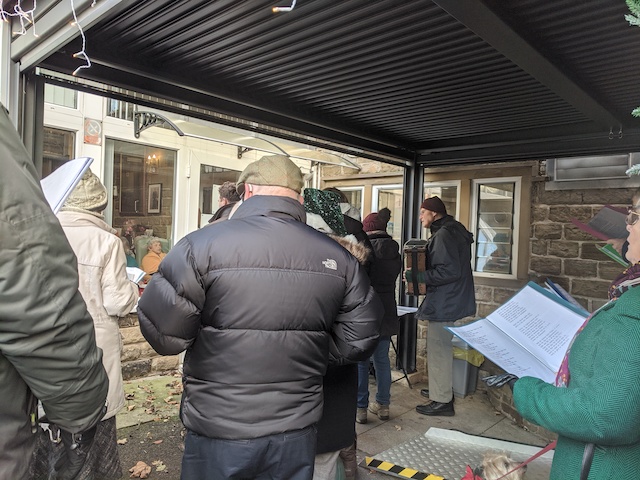
The same day as the carol service, the government announced 'Plan B', with the reintroduction of masks in indoor settings except hospitality, the encouragement to work from home when possible and the introduction of covid passports for indoor venues with more than 5000 unseated people, outdoor events with more than 4000 unseated people and any event with more than 10,000 people. This caused disquiet amongst many Conservative MPs with up to 99 rebelling against the government in the parliamentary votes, which were carried with Labour support. In addition the booster was made available to all over 18, with the aim of vaccinating those who wished by the end of 2021 - a rate of over a million a day.
News began to emerge of a number of 'Christmas Parties' in government departments last December, when indoor gatherings in London were prohibited. There was much upset about the perceived 'one rule for us' culture and the general feeling of disdain which those in power were felt to have for the wider public, on top of a number of allegations of 'Tory sleaze' over the previous few weeks relating to MPs taking paid employment outside parliament then allegedly using their position as MPs to lobby on behalf of the companies involved. This disquiet was manifest in the North Shropshire bye-election, called when an MP resigned rather than serve a suspension for such advocacy, in which a Conservative majority of over 22,000 was overturned in favour of the Lib Dems.
Meanwhile Omicron spread widely and rapidly, particularly in London, leading to speculation that wider measures would be introduced. It also led to plans to accommodate an increasing number of patients requiring intensive care and a feeling of 'here we go again'.
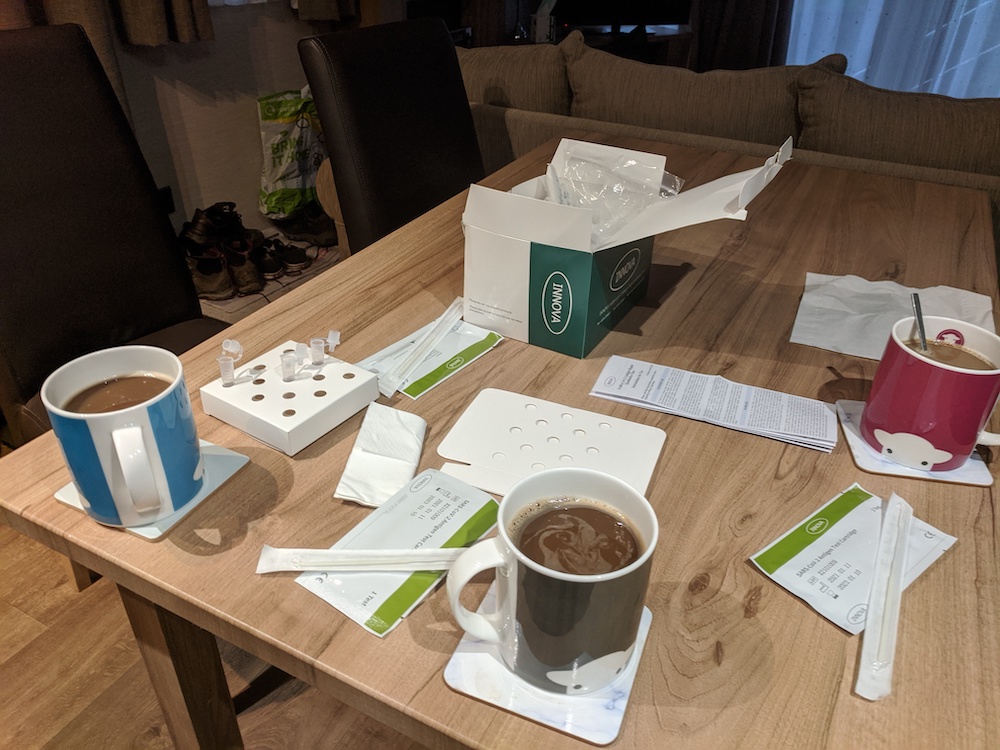
In the event further measures were ruled out in England, initially before Christmas then before New Year. Many in business, particularly retail and hospitality, complained however that the advice to limit social interactions and prioritise what was important lead to 'lockdown by stealth' as people cancelled restaurant bookings and hairdressing appointments to minimise the chance of their not seeing family over Christmas. The early impact of Omicron on hospitals was mainly on staff absences rather than admissions.
The Premier league fixtures were affected as a number of teams declared themselves unable to field sides. By Boxing Day Burnley had four matches in hand, three cancelled due to covid in the opposition and one due to snow at Turf Moor.
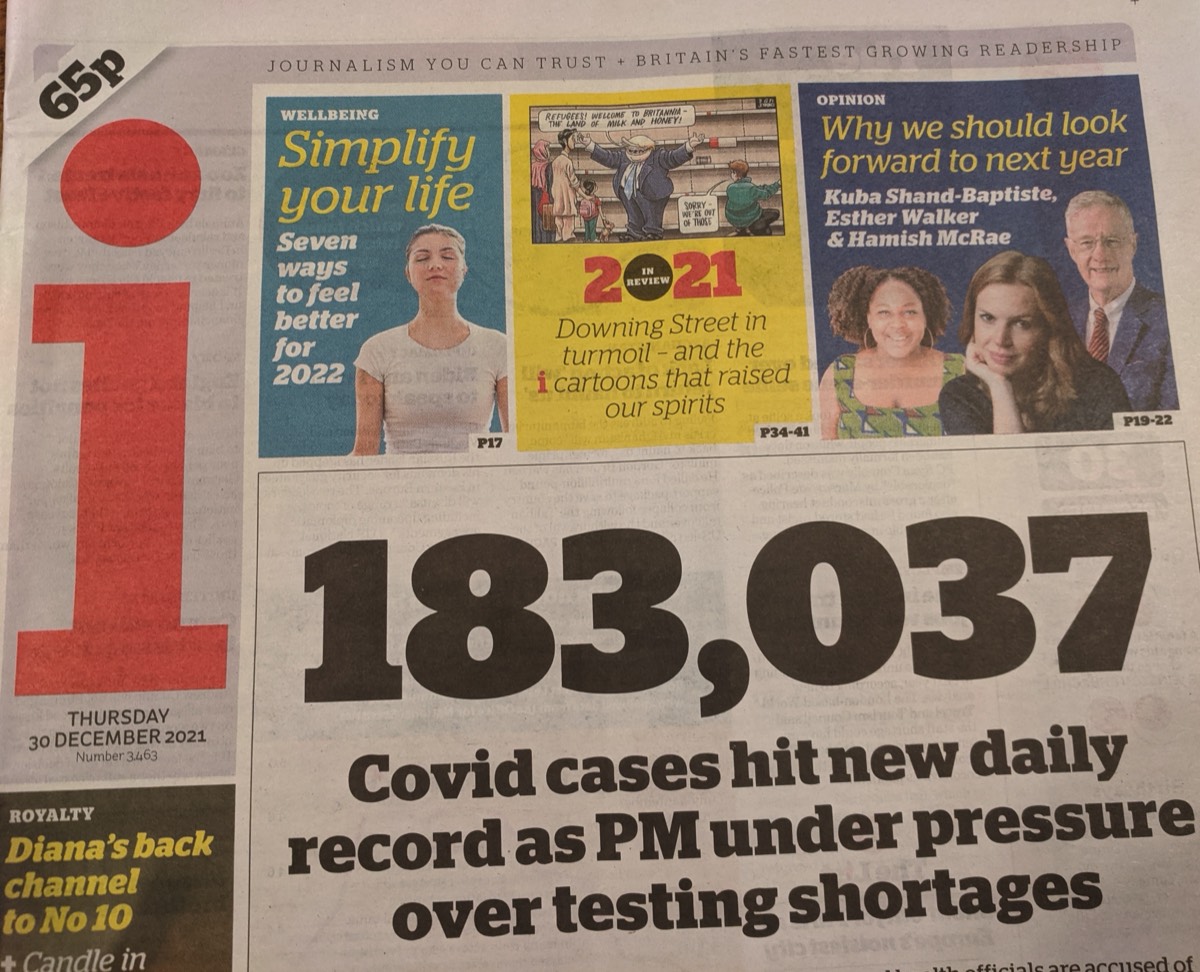
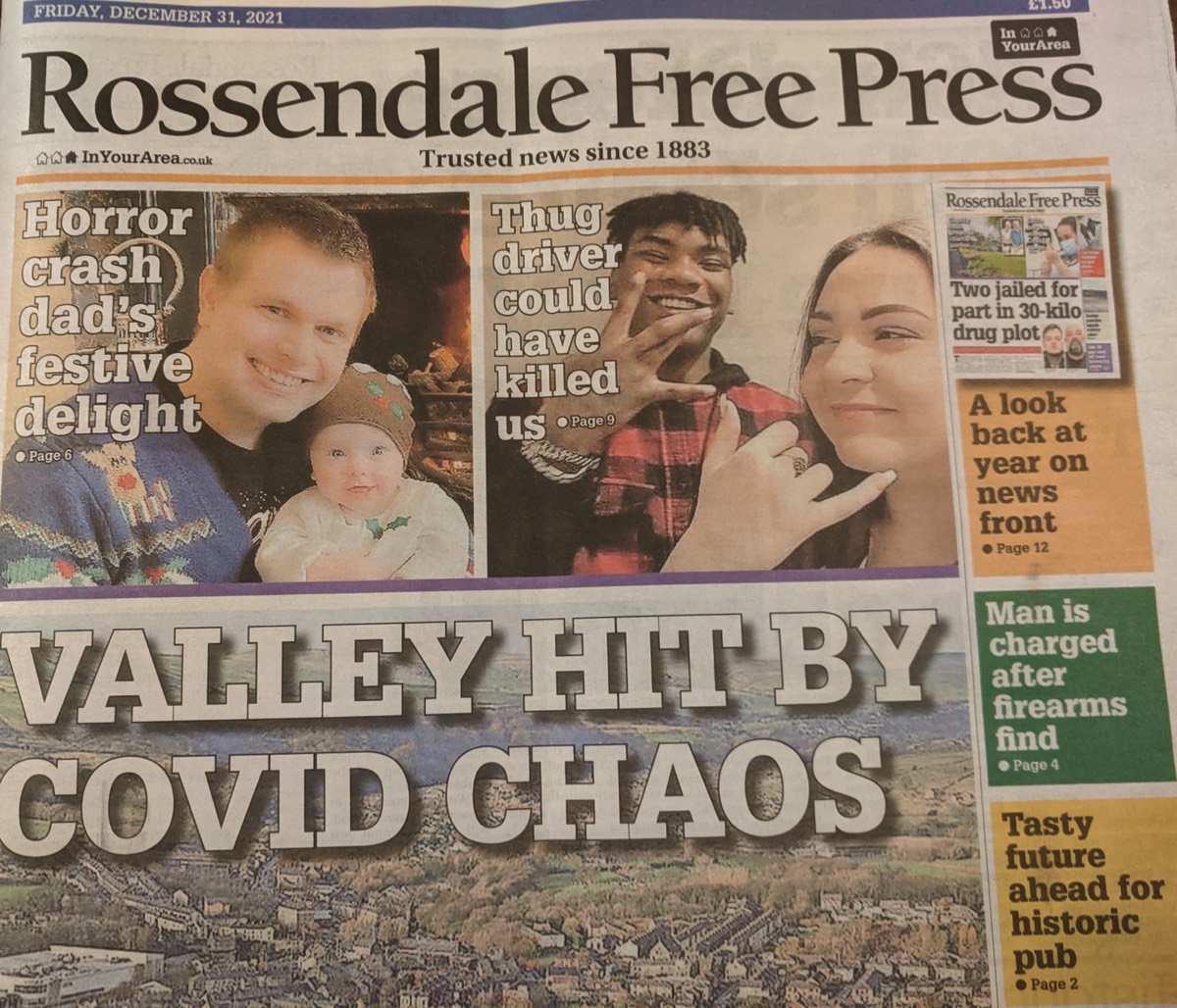
National and local news headlines December 30-31 2021.
Covid numbers began to stabilise by the middle of January, though there were still over 100 inpatients with Covid at our local hospital with nationally an average of 100,000 new cases and 260 deaths per day. However on 20th January the PM announced that covid restrictions would be lifted over the rest of the month. The advice to work from home was lifted, as was the requirement that children should wear masks in class, although a number of head teachers continued to require it in their schools. The requirement to wear masks in shops, public transport and other indoor premises was to be lifted by the end of January. Some welcomed these, others felt it was too soon. Covid passports for large-capacity venues were also lifted.
Meanwhile a number of reports relating to alleged 'parties' or 'work meetings' in 10 Downing St during previous periods of lockdown when parties or gatherings of multiple people from mixed households were prohibited under the rules continued to be discussed in mainstream and social media. Speculation mounted that the Tory backbench MPs were submitting letters calling for a vote of no confidence in Boris Johnson. Some confirmed this and called for his resignation, others insisted on waiting for the outcome of the inquiry into these events.
Meanwhile on 27 Jan 2022, the day masks were not longer mandated in indoor public places, our hospital had 100 inpatients with covid including 9 in critical care.
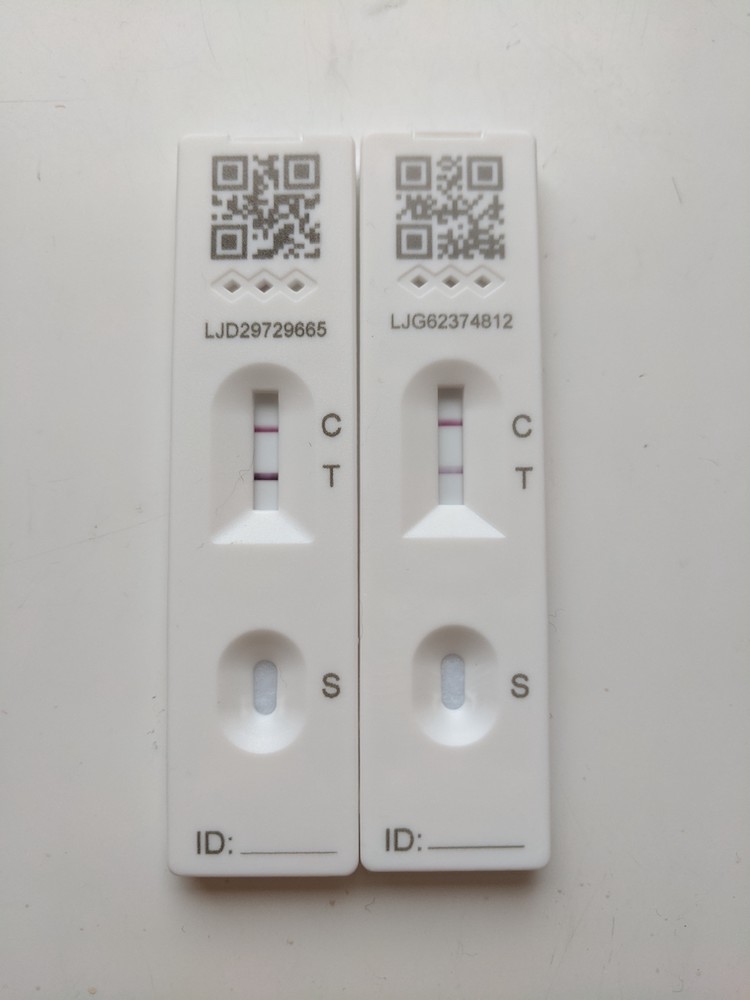
Well it had to happen. 16 Feb 2022.
We were in good company with the announcement on Feb 20th that the Queen has tested positive. Stay well, Ma'am.
Over the past few weeks the narrative has been changed to 'living with covid' in preparation for the lifting of all restrictions a month earlier than originally anticipated. This would mean:
- an end to the legal requirement to self isolate after a positive test from Thursday Feb 24th
- supplementary sickness payments to cease and statutory sick pay to resort to day 4 of illness
- and end to quarantine and testing for unvaccinated travellers to the UK
- and end to routine free lateral flow tests except in special circumstances, e.g. the extremely vulnerable and social care staff from April 1st.
- a scaling back of the routine Office for National Statistics surveillance screening.
The government did say that this was 'not over' and urged people to be responsible. It will be interesting to see how that message is interpreted. As ever, these were welcomed in some quarters and opposed in others. It was noticeable however that many in the scientific and healthcare communities felt this was too soon.
At the time of the announcement, there were 11,555 inpatients with covid, 331 in 'ventilation beds' and 144 dying per day within 28 days of a positive test. Locally there were 5 patients in critical care and 45 in ordinary beds - the lowest for some time but still that's 50 beds which aren't available to treat other people. I'm not sure how many staff were off but this includes yours truly, still testing positive on day 5 but thankfully not very ill.
By April 1st mask wearing indoors had virtually vanished, even in the hospital except in clinical areas.
As of May 31 2022 there were 49 inpatients with covid in the hospital, including one child and one on critical care. It may be better, it isn't over.
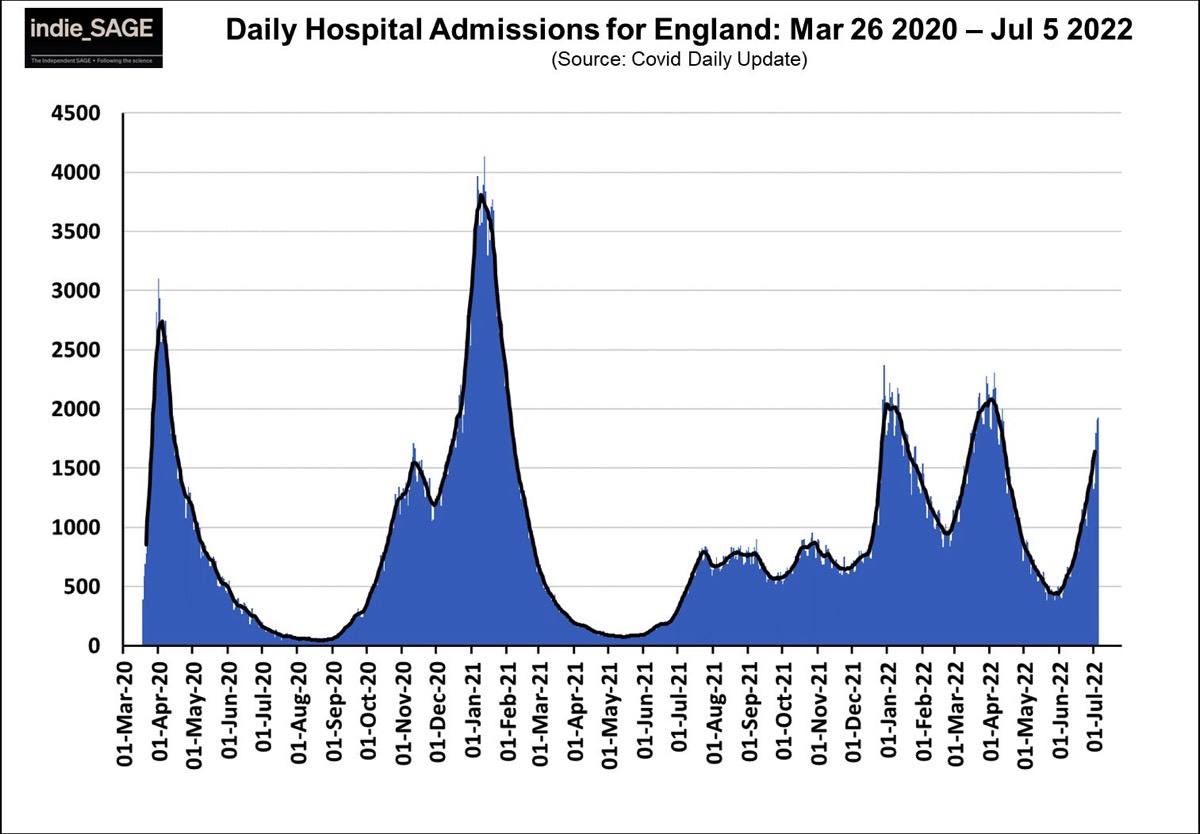
Sadly it proved to be far from over. Hospital admissions increased 2.5 fold between end May and mid July, including an increase in admissions to ITU. Mask restrictions were removed from the hospital, only to be reintroduced a week later. Meanwhile in ordinary conversation the narrative moved from those who were ill or had died to the impact of restrictions of freedoms.




